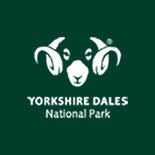
Freshwater Name Trail - FSC
Need to identify minibeasts in ponds and streams? The FSC Freshwater name trail fold-out guide has been used by generations of visitors to FSC Field Centres.
The simple flow chart on this guide shows representatives of the main groups found in ponds and streams. These include animals with no legs, such as hydra, flatworms, true worms, leeches and molluscs. Plus the animals with jointed legs, such as crustaceans, insects, spiders and mites. Freshwater insects include those with nymphs (such as mayflies, dragonflies and damselflies, stoneflies and water bugs) and those with larvae (such as caddis flies, beetles, alderflies and true flies).
As well as making a simple list of minibeasts, the Freshwater Name Trail supports many different investigations.
- How do minibeasts breathe underwater? Different animals obtain oxygen in different ways. For example, flatworms, leeches and snails can absorb oxygen through their skin. Other animals, like mayfly nymphs, have gills. These gills are easily to see moving on the live animal. Mosquito larvae, water scorpions and rat-tailed maggots use a ‘snorkel’. And a few animals, like water spiders, collect air bubbles from the surface.
- How are minibeasts move through water in ponds and streams? Some animals, like leeches, flatworms and flattened mayfly nymphs, are streamlined. Are the animals that live in moving water shaped differently to those that live in still water? Can you compare the deep and shallow parts of the same pond?
- How clean is the water? Since different animals tolerate different levels of pollution, you can use the list of minibeasts you have made. The guide features a simple biotic index.
What about adding one of these?..





